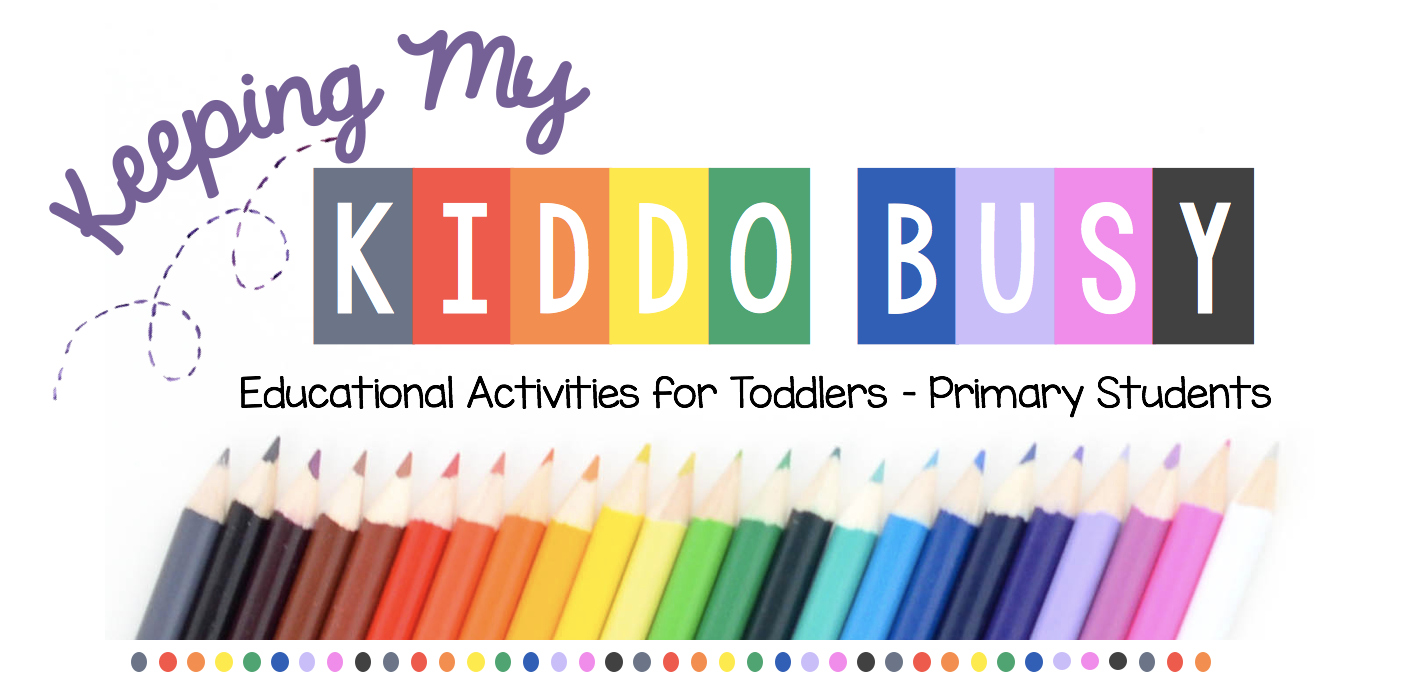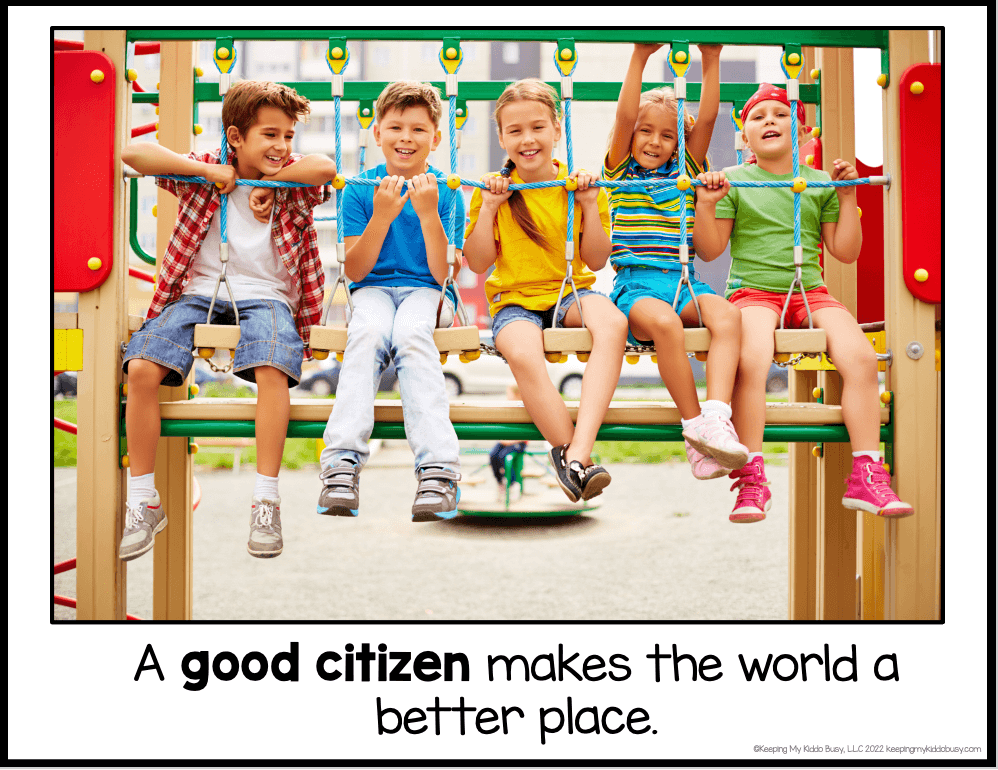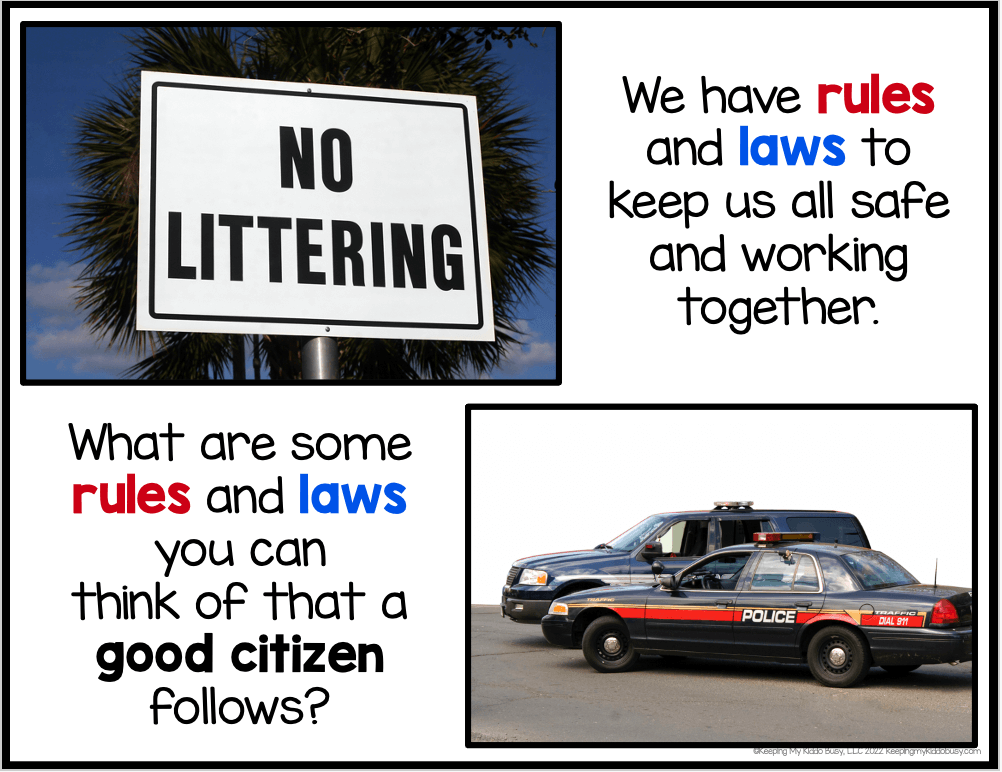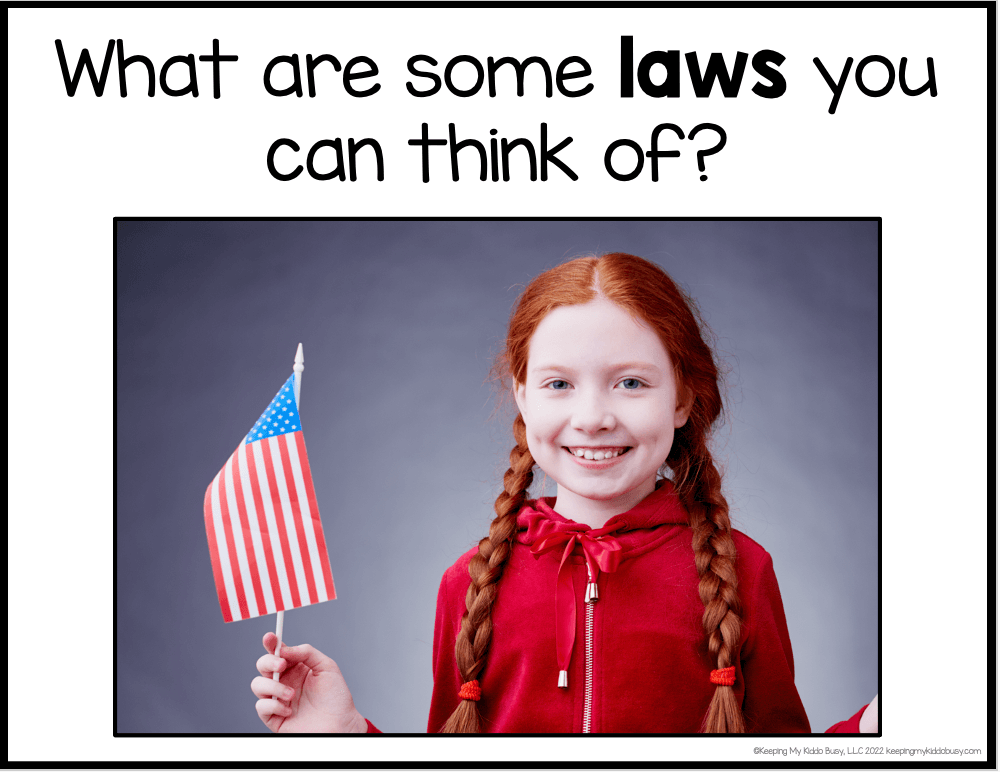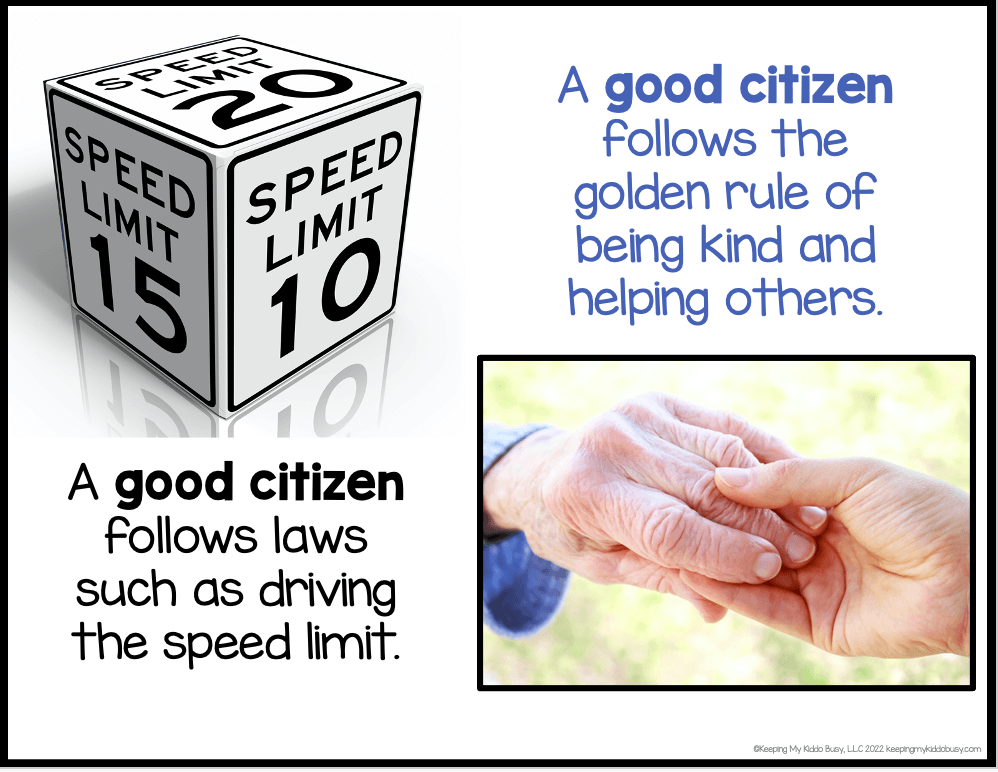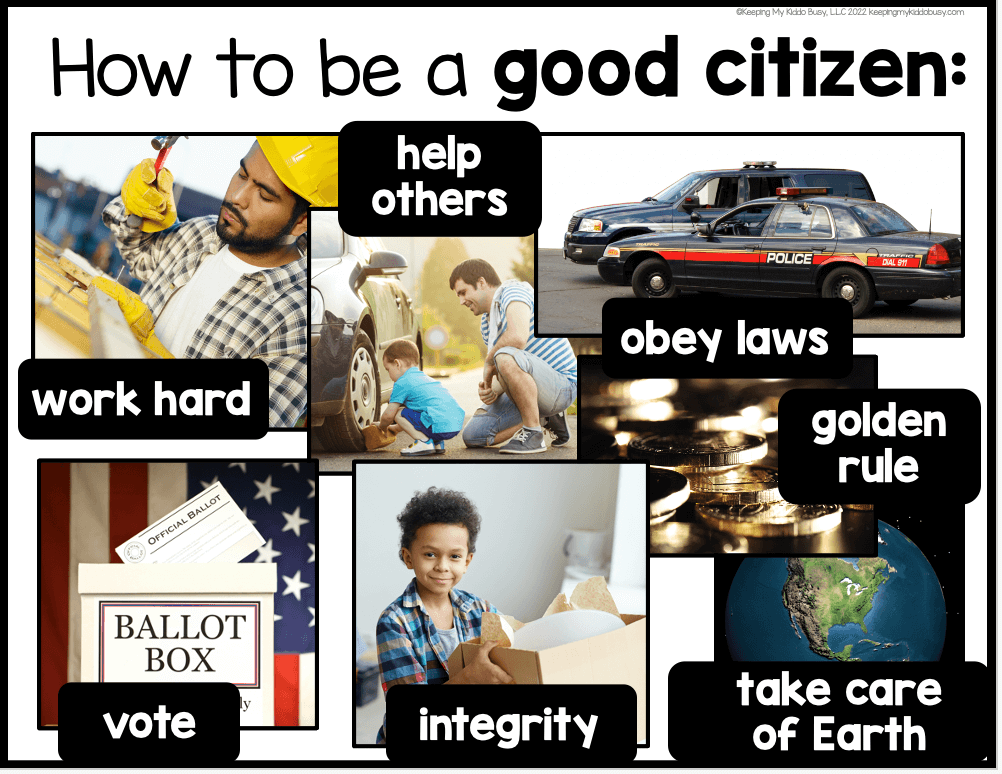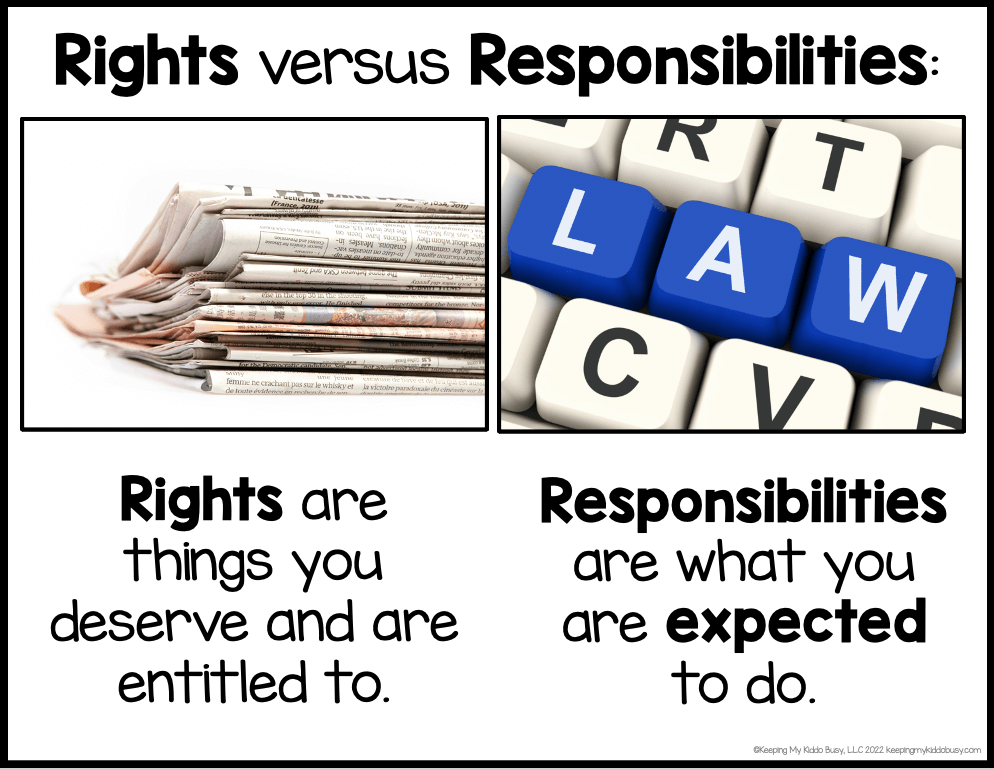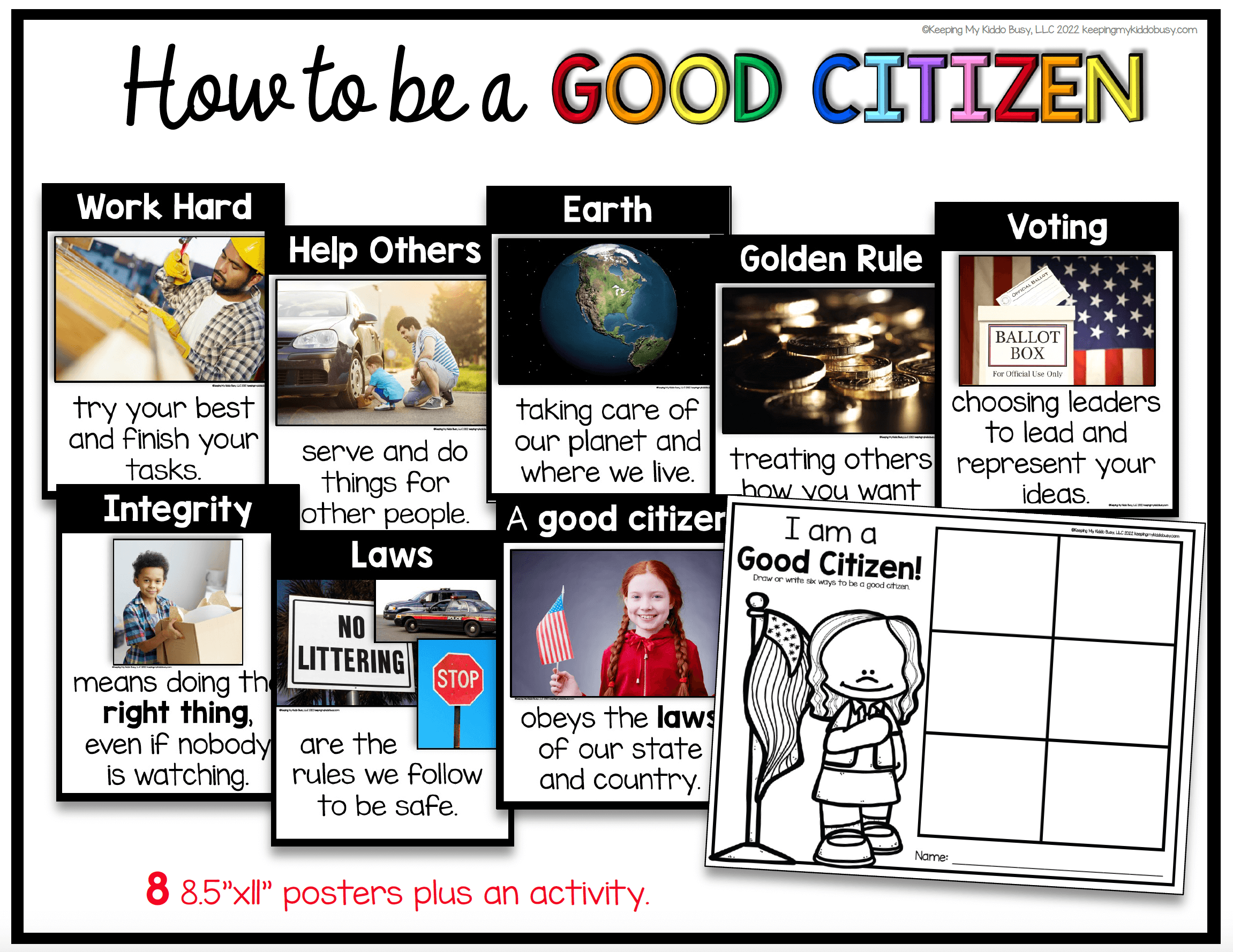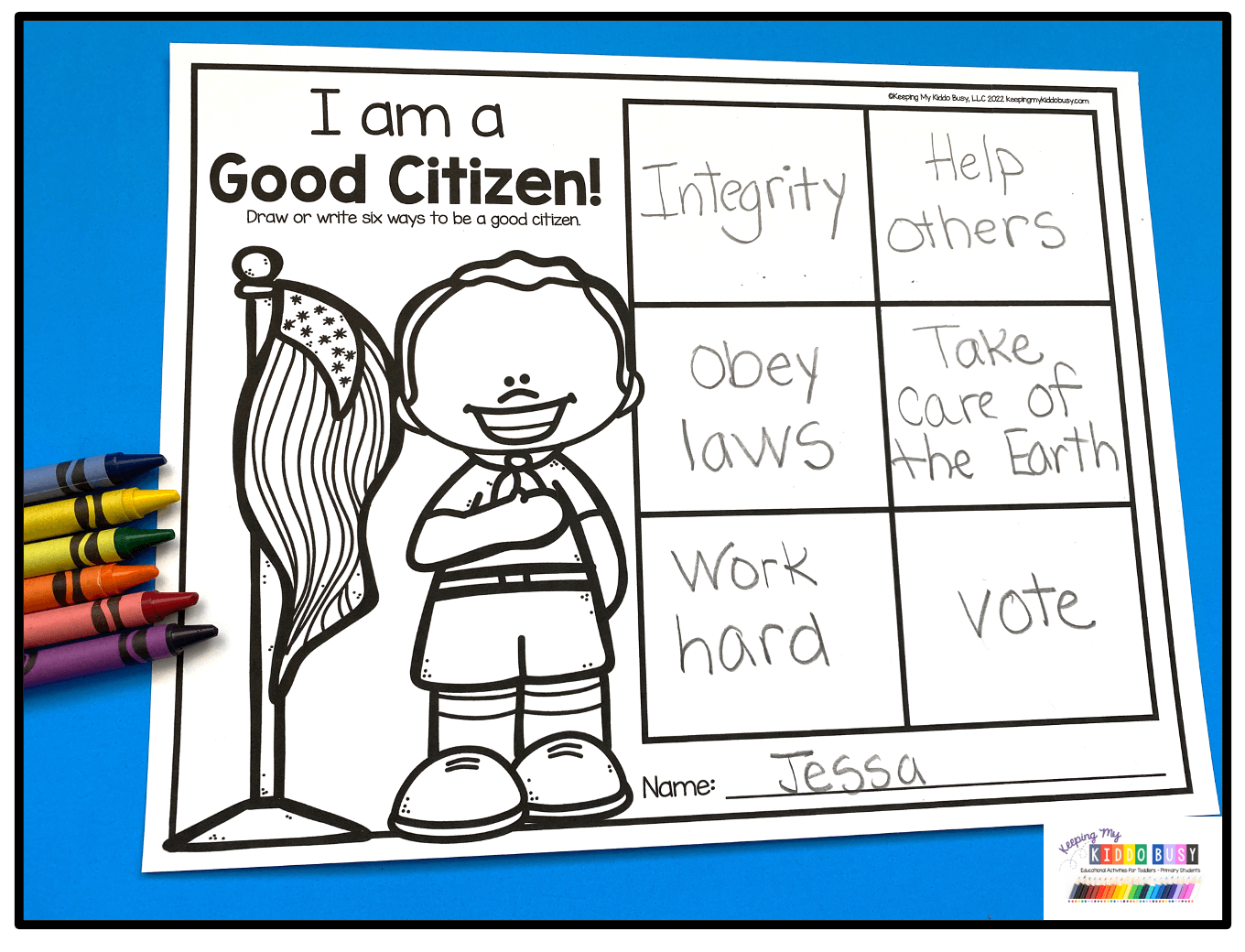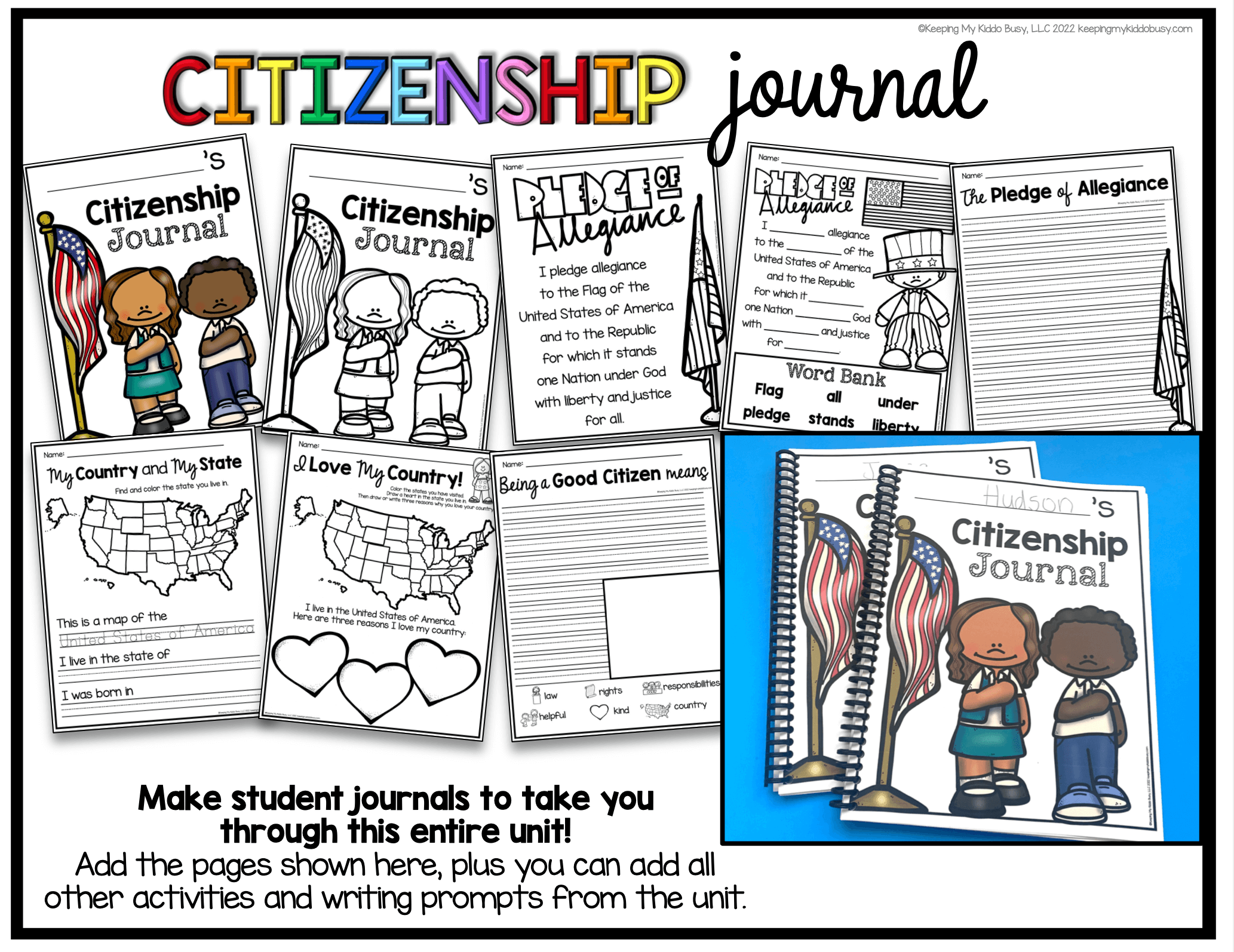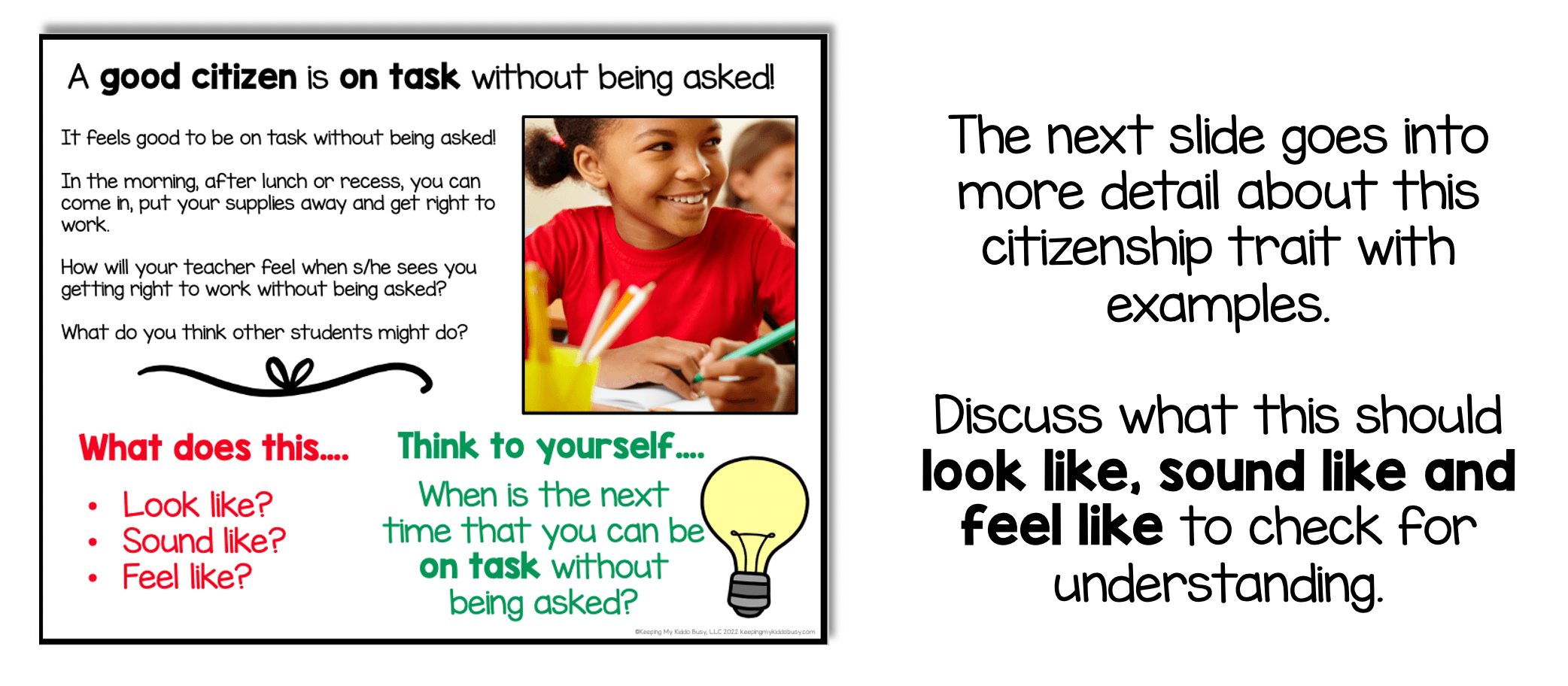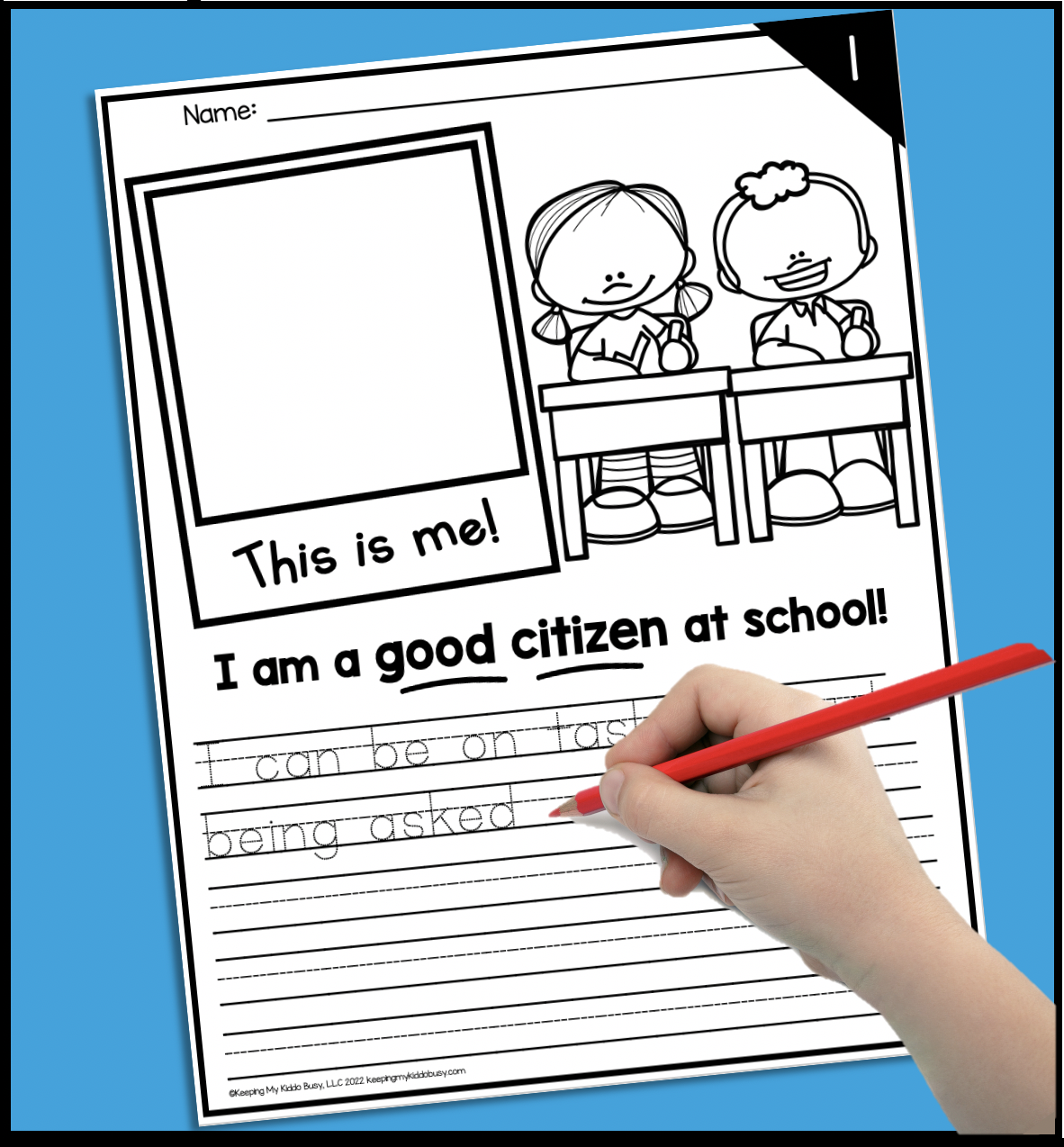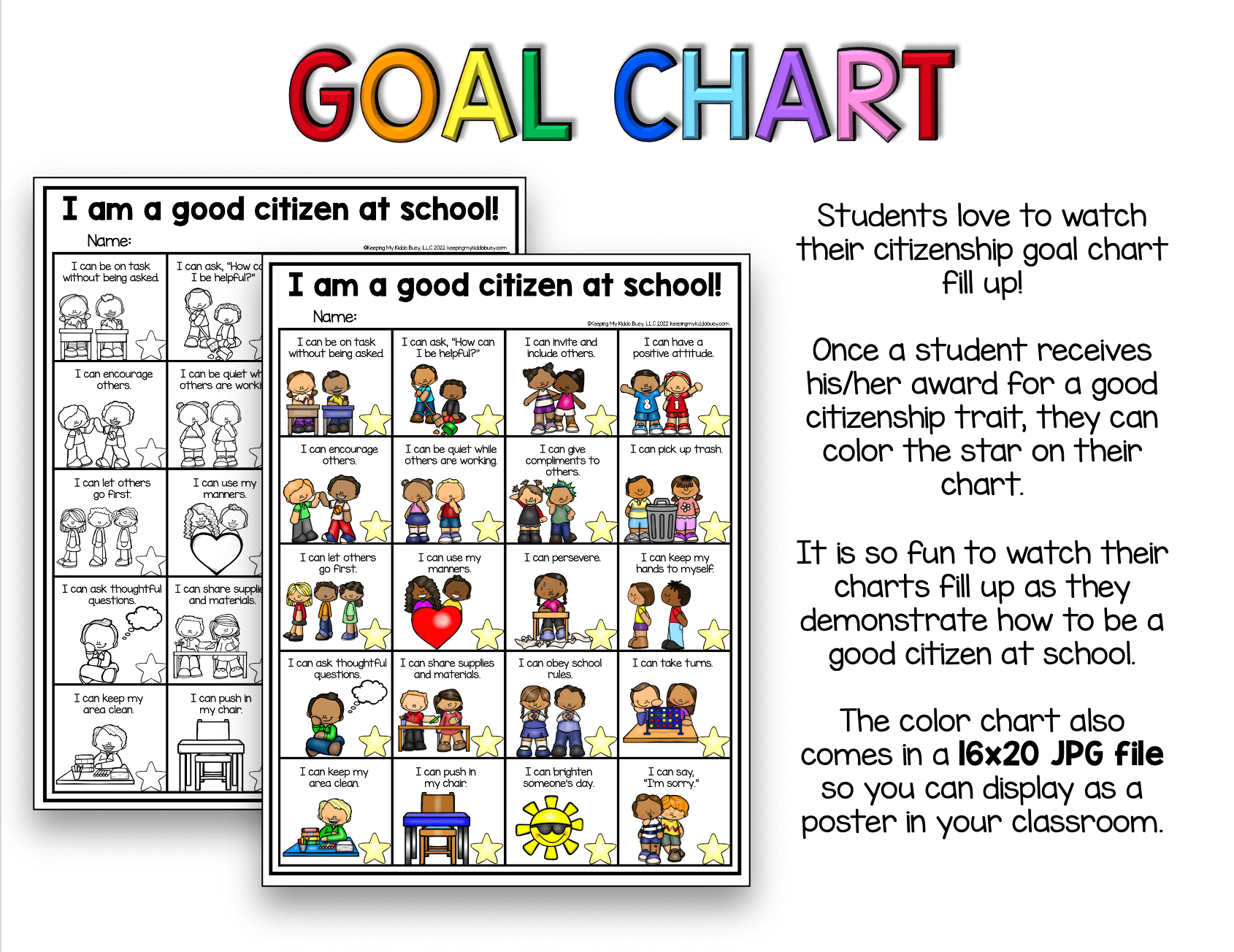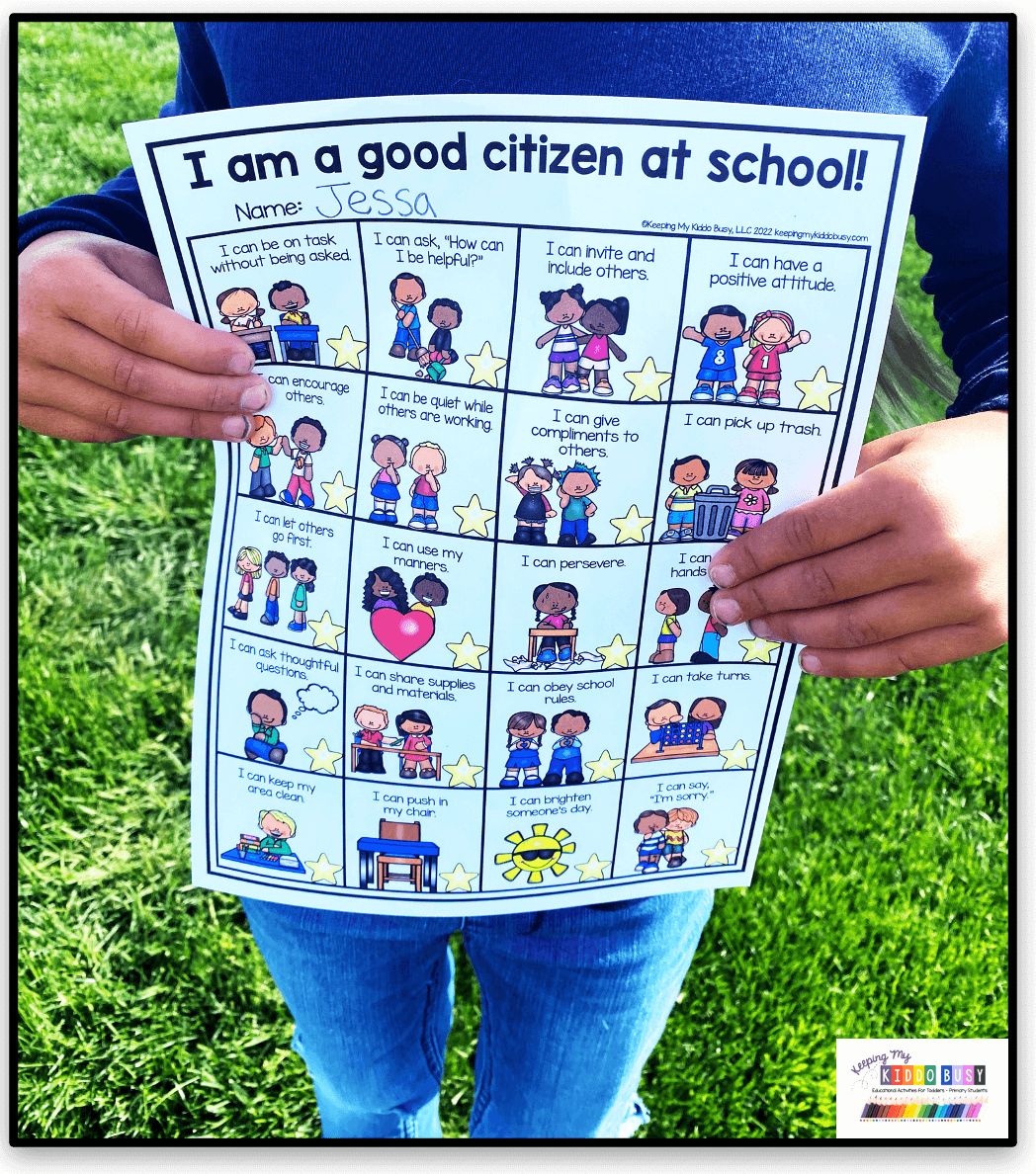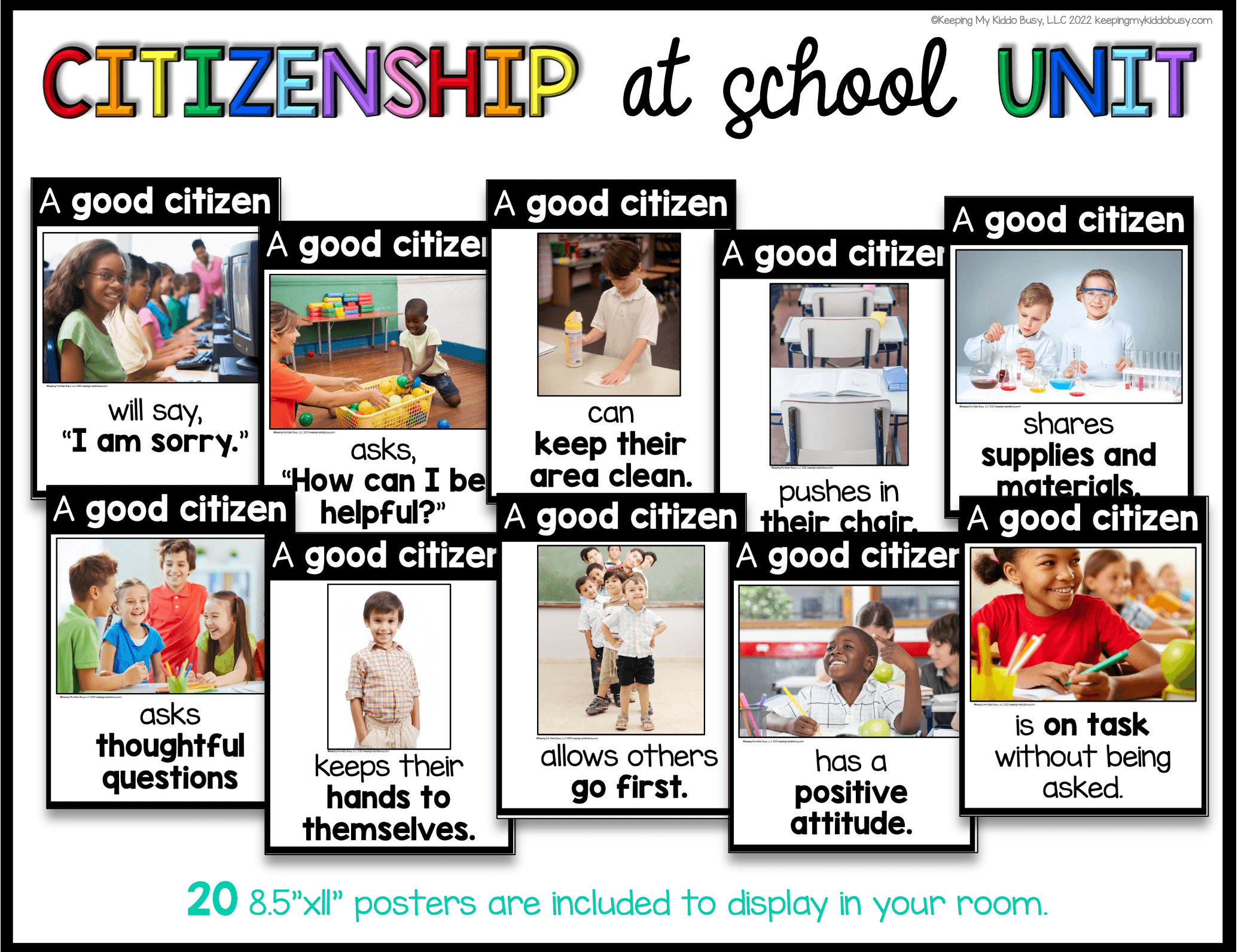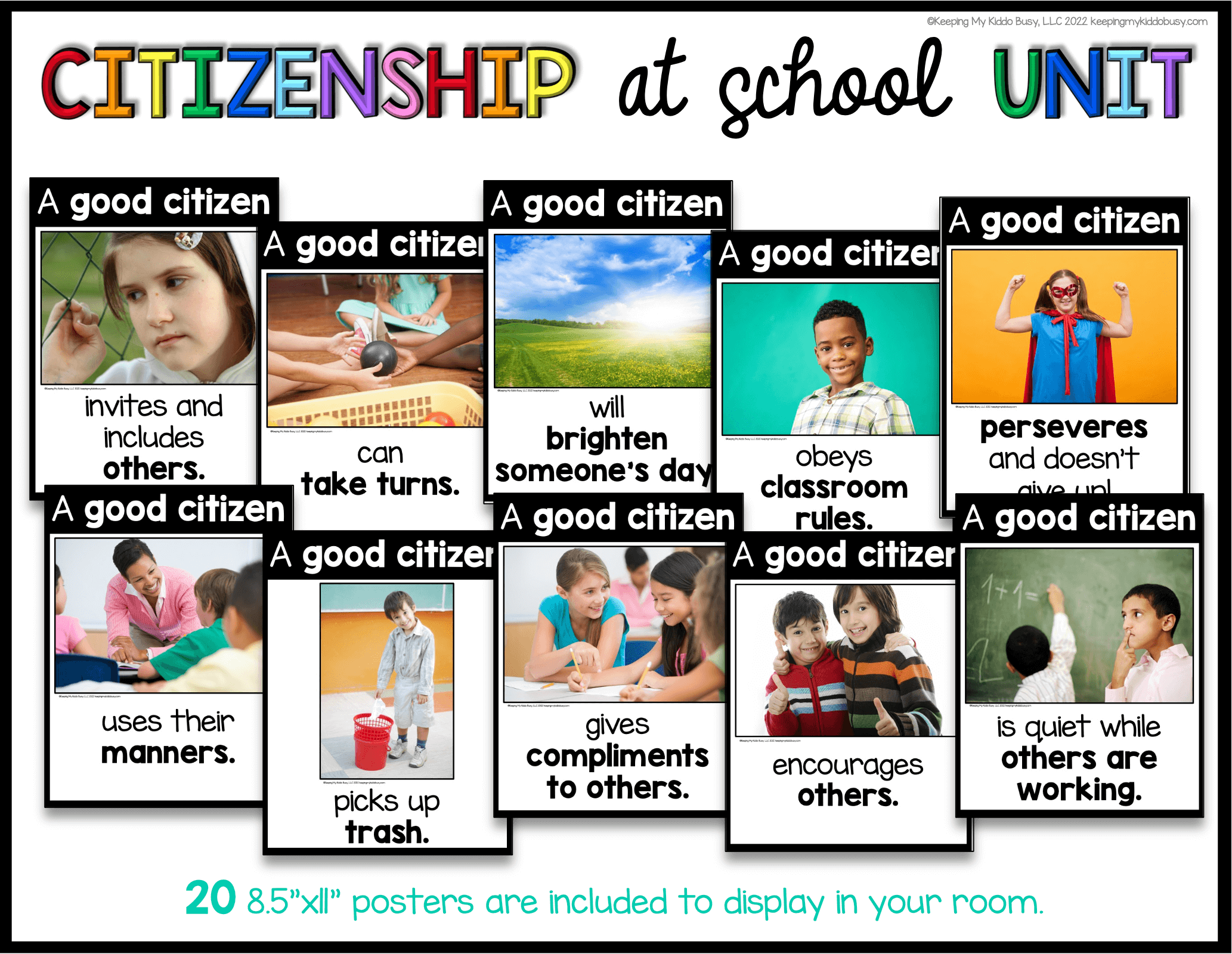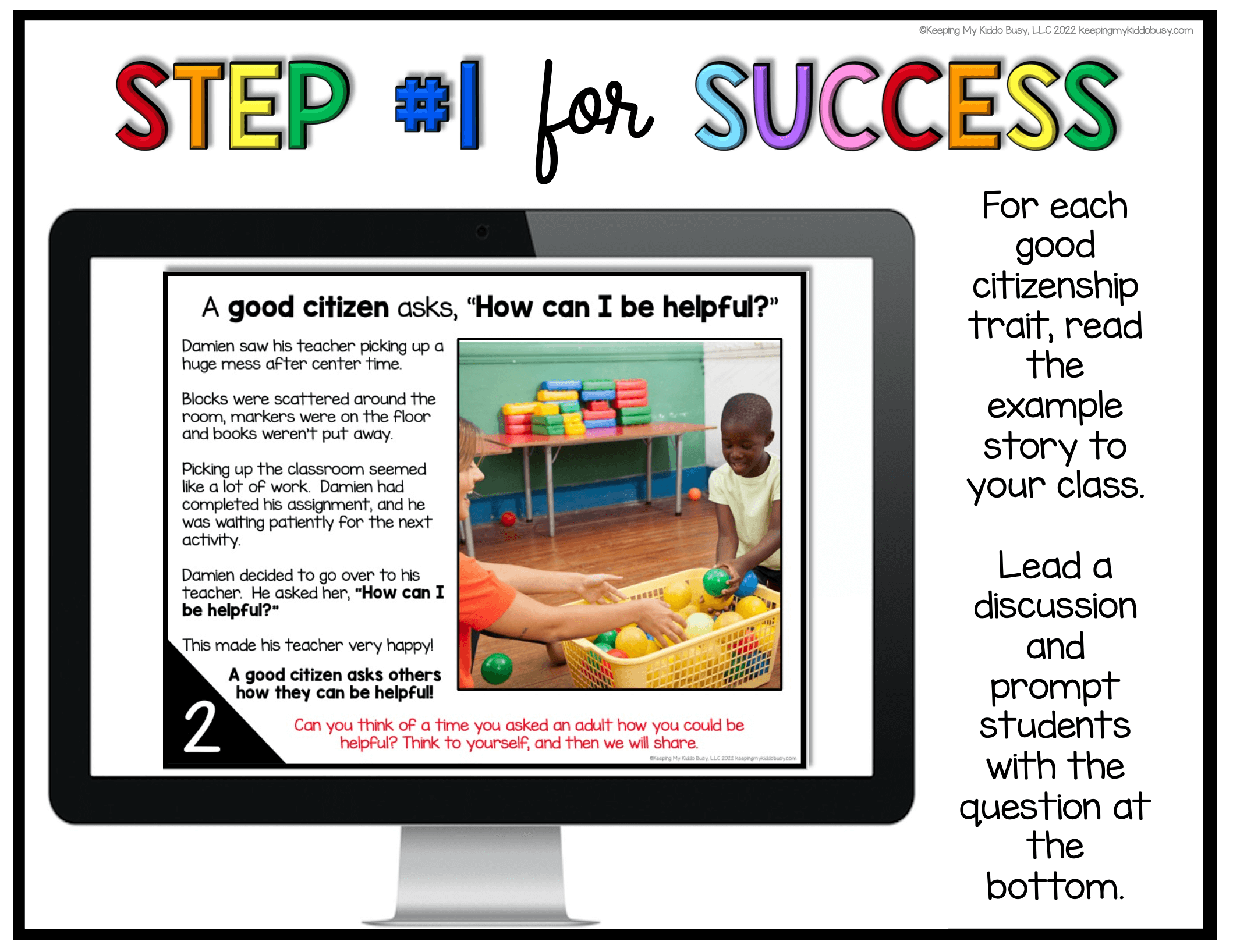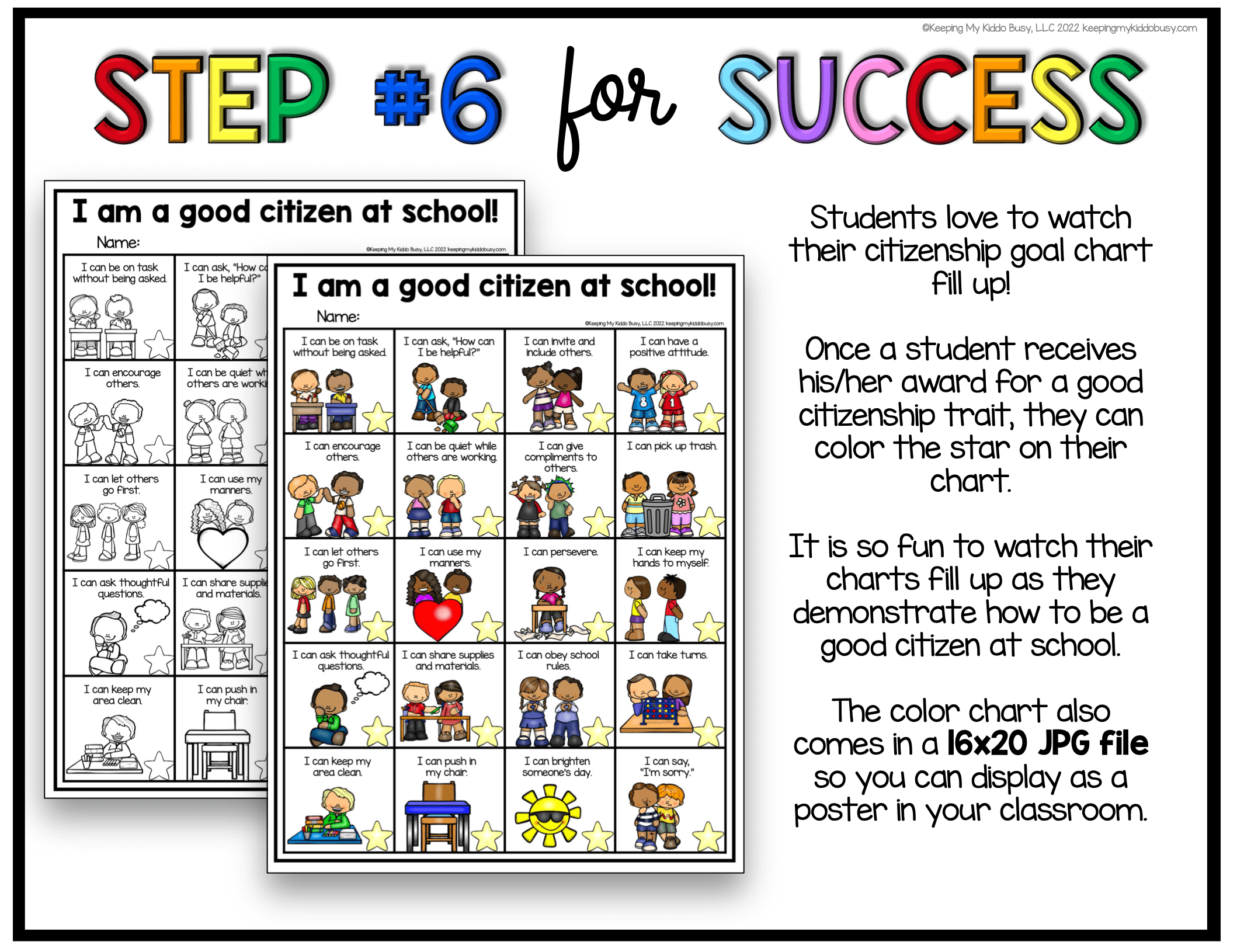How to Be a Good Citizen at School - Citizenship Skills FREEBIE!
President’s Day is the perfect time to learn about what is means to be a good citizen!
This is truly a must-have unit for all kindergarten and first grade teachers.
Citizenship, expectations at school, social skills, friendship, and behavior are all tied together.
I am so excited to teach a unit that covers all of these incredibly important topics.
This page contains affiliate links. Read Full Disclosure
This isn’t something I can teach once, and then expect students to practice good citizenship all year.
These ideas and activities can be a central theme that take you though the entire school year, and you’ll see a huge improvement with your students!
I start with an overview of what a good citizen means.
Why do we have rules and laws?
After this background information, I take these ideas and transfer them to our classroom and school.
These slides can be shown from a computer/smartboard, or you can print them into a beautiful 8.5 x 11 book.
If you’re teaching this unit close to President’s Day….
I’ll email you this adorable I See Presidents mini book and matching activity!
WHAT IS A CITIZEN?
This video gives a little background on what it means to be a citizen.
This next video is silly, and your students will be giggling, but it teaches ways to be a good citizen.
It follows up on rules, laws and how to be kind to others.
I’m sharing FREEBIES on this blog post to go with one of my favorite read aloud books What if Everybody Did That?
Let’s get started with this unit!
Now you’re ready to show these posters that are perfect for building background and vocabulary.
Integrity is one of my favorite vocabulary words to teach since it is the “umbrella word” for all traits related to respect.
Show this slide and students fill in their graphic organizer.
After showing the laws poster, discuss different laws we have and why we have them.
Then students can draw/write about four laws they know.
This is a great way to check for understanding.
These good citizen craft wheels are so fun to make!
Three different versions are included with slightly different pictures and wording.
An important part of being a citizen is understanding rights versus responsibilities.
These activities and graphic organizers help students understand the different between these two important words.
We fill out rights and responsibilities as citizens as well as students at school!
I add all of these worksheets to their citizenship journals - I love having all of the activities from this unit in one place.
Now that students have a little background on what a citizen means, and ways to be a good citizen in your town/city/country, we move on to how to be a good citizen at school.
I Can Be a Good Citizen at School!
It is easy to feel upset when students do not follow our expectations. That is totally natural.
What I have realized after teaching for many years, and after having children of my own, is that citizenship skills must be explicitly taught and modeled daily… this includes social and friendship skills as well.
I have broken everything down for you into sequential, manageable steps with 20 specific citizenship qualities to focus on.
Let’s get started!
What I love about this unit is that while focusing on how to a good citizen, you’re also teaching students how to be a good friend, appropriate and helpful social and emotional skills, and even behavior expectations.
Now that students have learned about and discussed a new citizenship trait, they can make a “game plan” about how they will implement this skill!
I provide the sentence starter, and students must complete the sentence and add details.
Tip:encourage students to be very specific. I want them to truly think about transferring this to their daily behavior and routine.
When is the next time they will be on task without being asked?
Focusing on students who are doing the right thing always works better than constantly disciplining those who are off task.
I Spot (same as I spy) is such a fun way to recognize students who are practicing a specific citizenship trait.
As soon as you announce, “Wow! I spot Amelia coming right in from recess and she is now on task without being asked!” every other student in your class will quickly and quietly get to work.
It truly works like magic!
For each of the 20 good citizenship traits, there are also these adorable awards.
Both girl and boy versions are included, and you can simply print, cut them apart and have them ready to go.
Students love getting these, and it is such an easy way to promote positive behavior and good citizenship in your classroom.
Citizenship Goals
These goal charts are a game changer!
It is such an easy and visual way for students to work towards positive choices.
Use the color or black and white version.
One thing I love about the black and white chart is students can color the box when they meet their goal.
They love watching their chart fill with color as they practice being a good citizen.
20 SKILLS COVERED IN THIS UNIT
These skills are specific and measurable.
For example, you do not see, “A good citizen is respectful.” That is not specific enough for young children.
What does that look like? Sound like? Feel like?
I break respect down into multiple, specific traits.
Instead, our citizenship traits include skills that are specific and measurable so students can put them into action.
A good citizen asks thoughtful questions.
I love this one because it encourages students to think about others, engage with each other, and use social skills such as eye contact and thoughtfulness.
Children have to be taught these skills.
A good citizen uses their manners.
This takes practice, but continually modeling and reminding students to use “please” and “thank you” in their sentences is a game changer.
In essence, you are teaching respect, but just with more specific wording.
SUMMARY AND OVERVIEW FOR SUCCESS
To be a good citizen, I teach my students about the word cooperation.
We have to work together to be good citizens so we can learn and have fun together!
This leads perfectly into one of my favorite books about cooperation, working together and citizenship.
What if you talked during story time… no big deal right?
Well, what if everybody did that?
What if you litter on the playground… no big deal right?
Well, what if everybody did that?
Why do we have rules and laws?
Well… what if everybody did that?!
This is such a great book to have your shelf to read aloud, but you can also watch it below with your students.
This read aloud is the perfect way to introduce and discuss being a good citizen and cooperation.
I made these FREE ACTIVITIES to go along with this book!
There are different versions you can use with K-2 students.
This complete unit comes with 68 slides to teach students how to be a good citizen in their community and school.
Plus, this unit also includes 31 picture and vocabulary posters, goal setting posters, 20 writing prompts, awards, a citizenship journal and printable activities/crafts.
